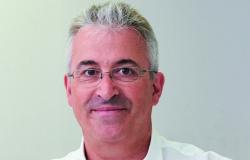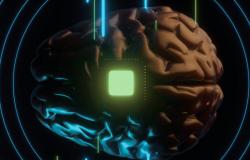The topicality of the theme of this column is none other than the publication of our latest results in the prestigious journal Nature Medicine. A publication which validates the clinical usefulness of teamwork that I initiated more than 20 years ago at Salpêtrière.
Back in 2001. A young neurologist researcher, I returned to Salpêtrière after three years of exhilarating science thesis with Stanislas Dehaeneduring which we laid the foundations of a new neuroscientific approach to consciousness.
I then began to devote part of my research to improving the care of non-communicating patients whose state of consciousness is extremely difficult to determine. Following severe head trauma, or cardiocirculatory arrest, some patients go through an initial period of coma, then return to a state of wakefulness. They thus become able to open their eyes for long periods of time, but without being able to communicate or show unambiguous signs of consciousness.
The Journal of Science Listen later
Reading listen 6 mins
Vegetative state, minimal consciousness, incorrect expressions
The terms “vegetative state” and “minimal consciousness” are problematic. The expression vegetative state was coined in 1972 by Plum and Jennett to express the dissociation between nervous control of so-called vegetative functions which remain preserved (that is to say the nervous control of digestion, circulation, ventilation, perspiration, etc.), and on the other hand the abolition of consciousness. But in many languages, the adjective vegetative is confused with that of plant, and causes the unworthy assimilation of these patients to vegetables, to green plants. One way to counter this serious attack on the dignity of patients requires explaining, as I have just done, the correct meaning of this expression.
It should also be noted that the nervous system of these patients continues, most often, to perform many other functions than just vegetative functions. In this respect this expression is therefore not only perilous, but incorrect.
Finally and above all, careful and repeated clinical examination allows this diagnosis to be corrected in approximately 30% of patients. Please note, however, that this does not mean that these patients wrongly diagnosed as being in a vegetative state are all conscious, but rather that they exhibit behaviors that go beyond the responses of the vegetative nervous system or simple reflex responses.
It is on the basis of this triple observation that a group of experts led by my colleague Steven Laureys proposed, in 2010, to replace the expression vegetative state with that of: unresponsive wakefulness syndrome.
This proposal escapes the vegetative/plant confusion and recognizes a clinical state which is often richer than that provided by the vegetative nervous system alone. Talking about unresponsive arousal syndrome also allows us to remain descriptive, and to express the need to enrich this behavioral description with measurements of brain structure and activity.
The Squared Head Listen later
Reading listen 55 mins
The term “unresponsive arousal syndrome” is also problematic.
Despite the laudable intentions and salutary efforts of my colleagues, the expression unresponsive arousal syndrome also remains problematic.
First of all, the expression used is complex, which undoubtedly explains its low diffusion beyond a very specialized environment.
On the other hand, the examination of these non-responding patients highlights numerous behavioral responses to stimulation: these responses are certainly most often reflexes, but their presence maintains the confusion between reflex responses and intentional responses. Especially for loved ones.
Finally and above all, defining this state by the absence of response can fuel the idea that the patient’s main problem lies in a communication handicap. A bit like the tragic model also of the locked-in syndrome, in which a clearly conscious but paralyzed patient cannot respond outside of an ocular code. Patients who are truly awake and unresponsive have cognitive and consciousness disturbances that go well beyond a communication problem.
In the absence of a satisfactory name, we must therefore take the time, each time, to explain all of this, and endeavor to bring out the singularity of each situation, of each patient who remains a person.
LSD, The documentary series Listen later
Reading listen 55 mins






